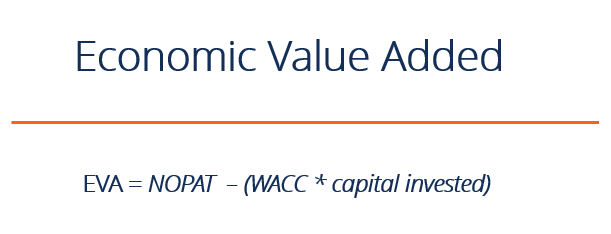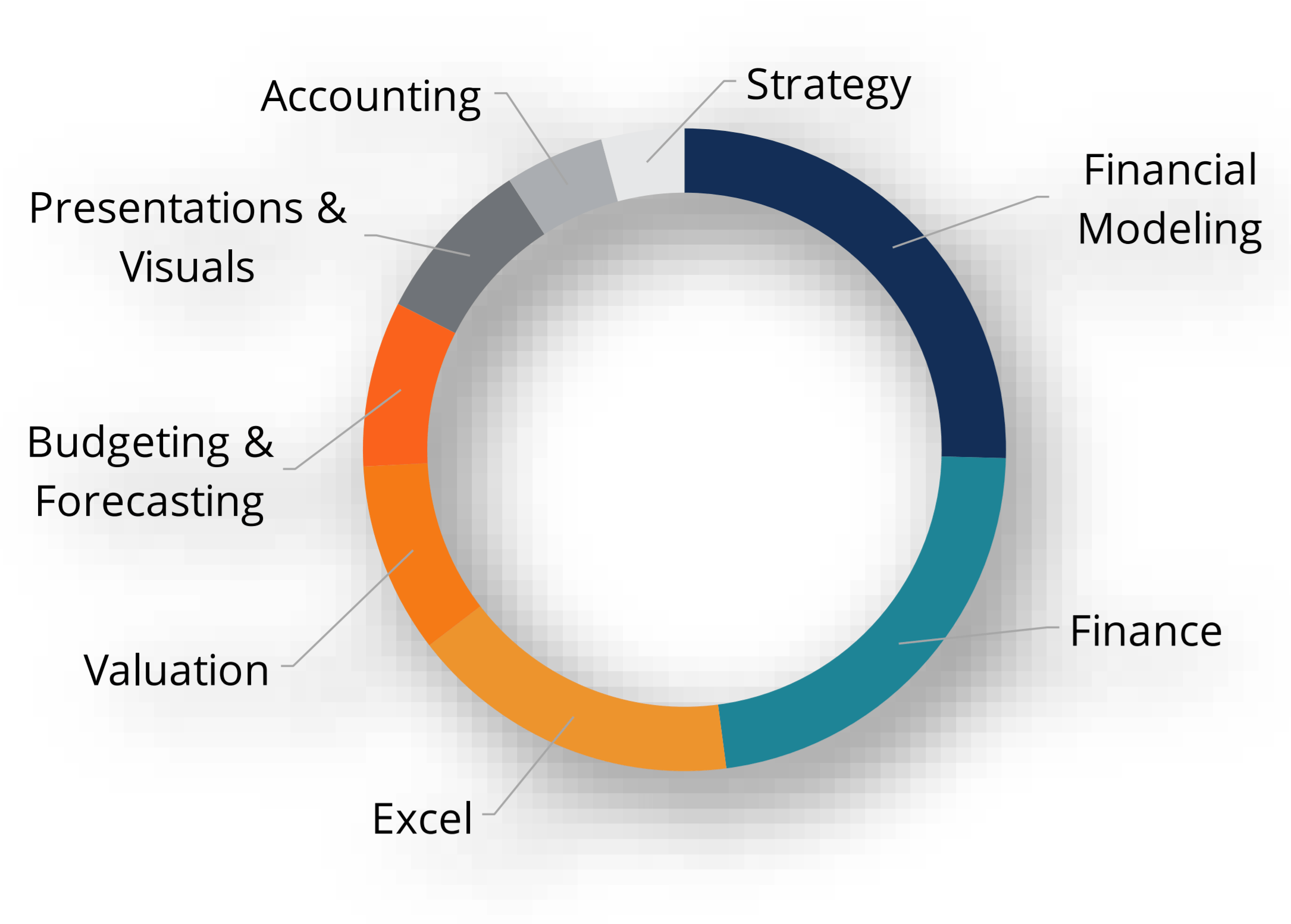Economic Value Added (EVA)
Additional value created above the cost of capital
What is Economic Value Added (EVA)?
Economic Value Added (EVA), sometimes known as Economic Profit, is a measure based on the Residual Income technique, which measures the return generated over and above investors’ required rate of return (hurdle rate).
EVA serves as an indicator of the profitability of projects in which a company invests. Its underlying premise consists of the idea that 1) real profitability occurs when additional wealth is created for investors and 2) that projects should generate returns above their cost of capital.
Key Highlights
- Economic value added, generally abbreviated as EVA, is a way to measure the economic profit of a company or project.
- EVA is calculated by taking net operating profit minus a finance charge. The finance charge captures the required rate of return on capital invested by the company.
- A positive EVA means the company is adding value, while a negative EVA means the company is destroying value.
EVA Formula

EVA adopts almost the same form as residual income, and the EVA formula can be expressed as follows:
EVA = NOPAT – (WACC * Invested Capital)
Where:
- NOPAT = Net Operating Profit After Tax
- WACC = Weighted Average Cost of Capital
- Invested Capital = Shareholders’ Equity + Net Debt at the beginning of the period (Alternatively, Invested Capital can be calculated by taking Total Assets minus Cash minus Non-interest Bearing Liabilities)
(WACC * Invested Capital) is also known as the Finance Charge
Calculating Net Operating Profits After Tax (NOPAT)
One key consideration for this item is the adjustment of the cost of debt. The cost of debt is implicitly included in the Finance Charge (WACC * Invested Capital) since WACC includes the cost of debt. Therefore, we need to make sure that we do not deduct interest expense when calculating NOPAT. We can adjust for this in two ways:
- Start with operating income (EBIT) and multiply operating income by (1 – tax rate); or
- Start with profit after tax (net income) and add back the after-tax cost of interest. Therefore, we should multiply the interest expense by (1 – tax rate) before adding back to profit after tax.
Accounting Adjustments
When calculating EVA, the typical practice is to make several accounting adjustments. Among the most common and important are:
- Expenditures on R&D, promotion, and employee training should be capitalized instead of expensed.
- Depreciation expense is added back to profit, and instead, a charge for economic depreciation is made. This reflects the true change in the value of assets during the period, unlike accounting depreciation.
- Accounts such as provisions, allowances for doubtful accounts, deferred tax provisions, and allowances for inventory should be added back to invested capital, which is also known as capital employed.
- Non-cash expenses should be added back to profits and to invested capital.
- Operating leases should be capitalized and added back to invested capital.
- Tax charge will be based on cash taxes, rather than the accruals-based methods used in financial reporting and will be calculated as follows:
Cash Taxes = Tax Charge per Income Statement – Increase (or + if Reduction) in Deferred Tax Provision + Tax Benefit of Interest Charge
Calculating the Finance Charge
Finance Charge = WACC * Invested Capital
WACC = [Ke * E / (E+D)] + [Kd * (1-t) * D / (E+D)]
Where: Ke = Cost of Equity and Kd * (1-t) = After-Tax Cost of Debt
Thus, given the adjusted taxes, we can write the economic value-added formula as follows:
EVA = NOPAT – (WACC * Invested Capital)
When EVA is a positive value, the company is creating value for investors. If EVA is a negative value, the company is destroying value.
Properties of Economic Value Added
The properties of using economic value added can be compared with other approaches in the following table:
| Valuation Model | Measure | Discount Factor | Comments |
|---|---|---|---|
| Enterprise discounted cash flow | Free cash flow | WACC | Works best for projects, business units, and companies that manage their capital structure to a target level |
| Discounted economic profit | EVA | WACC | Explicitly highlights when a company creates value |
| Adjusted present value | Free cash flow | Unlevered cost of equity | Highlights changing capital structure more easily than WACC-based models |
Example – Calculating Economic Value Added for a Company
| 2014 | 2015 | 2016 | |
|---|---|---|---|
| Capital invested (beginning of year) | $54,236 | $50,323 | $55,979 |
| WACC | 8.22% | 8.28% | 8.37% |
| Finance Charge | $4,460 | $4,167 | $4,682 |
| NOPAT | $7,265 | $5,356 | $4,336 |
| Finance Charge | $4,460 | $4,169 | $4,683 |
| Economic Value Added | $2,805 | $1,187 | -$347 |
Download the Free Template
Alternative Measures of Value
Financial analysts typically rely on various different methods of measuring value. Return on invested capital (ROIC) is a common method.
Ultimately, the truest measure of value is the cash flow that’s generated by a business, which can be measured by the internal rate of return (IRR). IRR is used in financial modeling and valuation to determine whether a company is creating value in its investments.
If the IRR is greater than the cost of capital, the company is usually adding value. If IRR is less than the cost of capital, the company is destroying value.
Video Explanation of Economic Value Added (EVA)
Watch this short video to quickly understand the main concepts covered in this guide, including the definition of Economic Value Added, the formula for EVA, and an example of EVA calculation.
Additional Resources
In conclusion, economic value added (EVA) highlights when a company creates value (or destroys value) and is helpful in understanding the company’s performance in a given year. For more resources to help advance your corporate finance career as a Financial Modeling & Valuation Analyst (FMVA), these additional resources will be helpful:
Analyst Certification FMVA® Program
Below is a break down of subject weightings in the FMVA® financial analyst program. As you can see there is a heavy focus on financial modeling, finance, Excel, business valuation, budgeting/forecasting, PowerPoint presentations, accounting and business strategy.
A well rounded financial analyst possesses all of the above skills!
Additional Questions & Answers
CFI is the global institution behind the financial modeling and valuation analyst FMVA® Designation. CFI is on a mission to enable anyone to be a great financial analyst and have a great career path. In order to help you advance your career, CFI has compiled many resources to assist you along the path.
In order to become a great financial analyst, here are some more questions and answers for you to discover:
- What is Financial Modeling?
- How Do You Build a DCF Model?
- What is Sensitivity Analysis?
- How Do You Value a Business?
Accounting Crash Courses
Learn accounting fundamentals and how to read financial statements with CFI’s online accounting classes.
These courses will give you the confidence to perform world-class financial analyst work. Start now!
Boost your confidence and master accounting skills effortlessly with CFI’s expert-led courses! Choose CFI for unparalleled industry expertise and hands-on learning that prepares you for real-world success.

